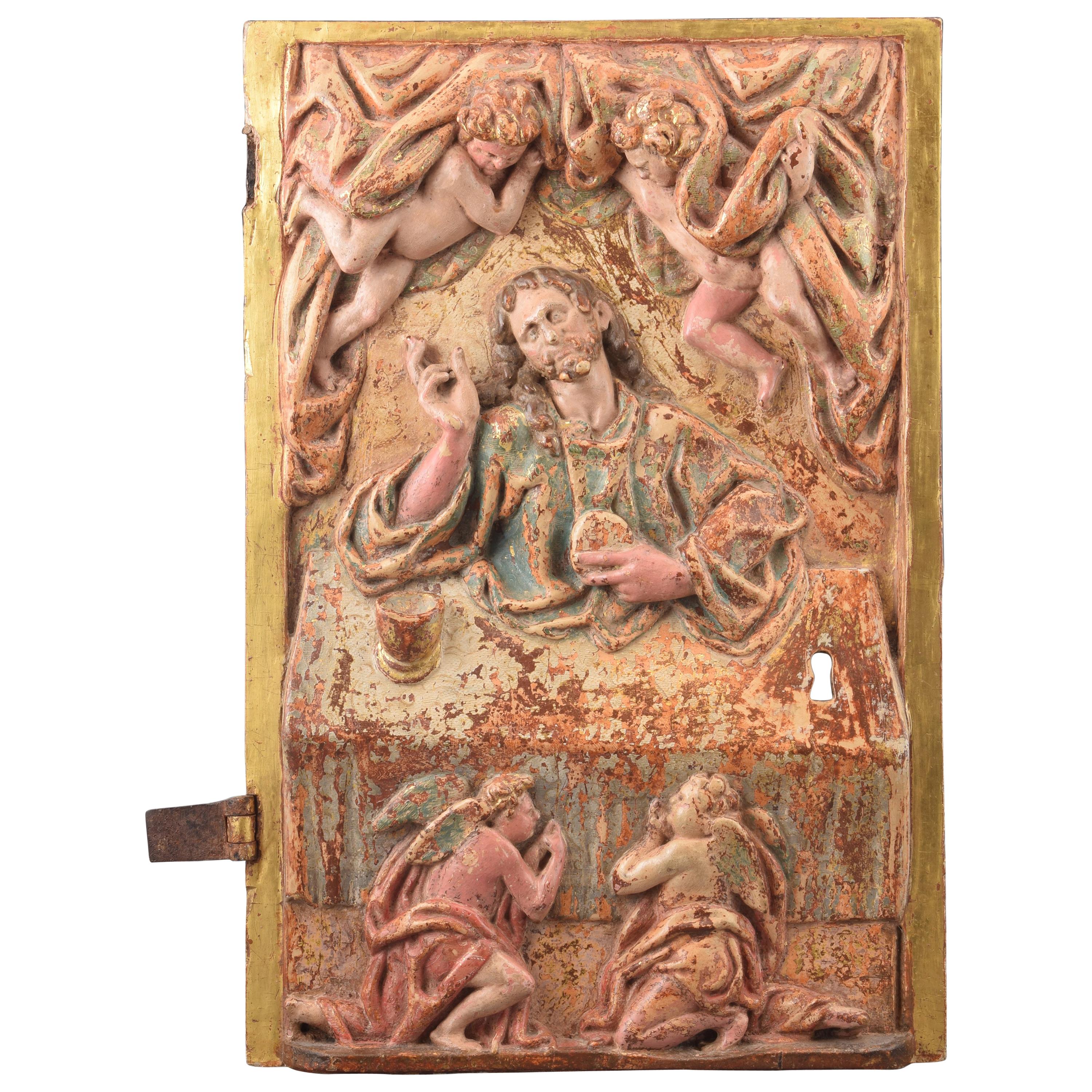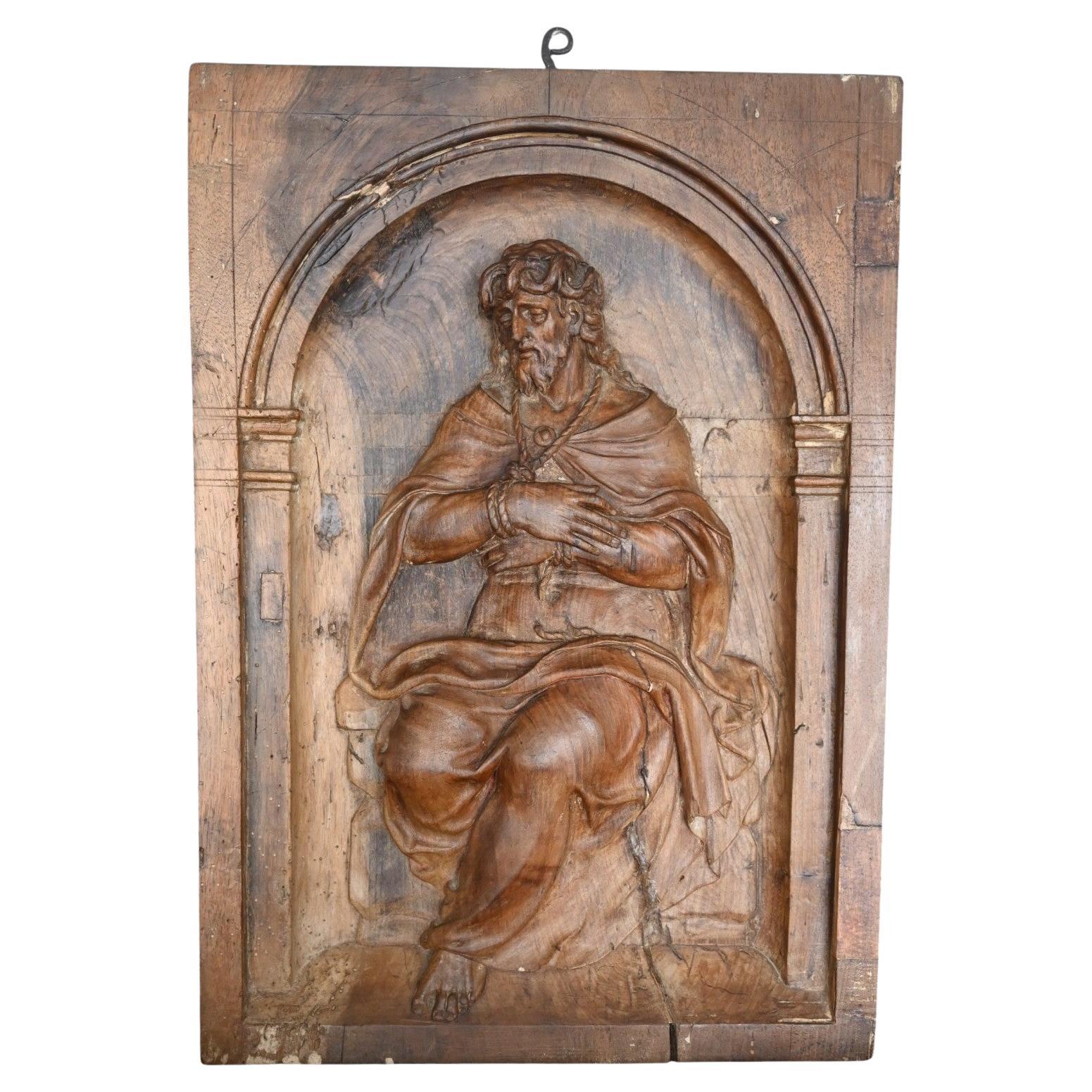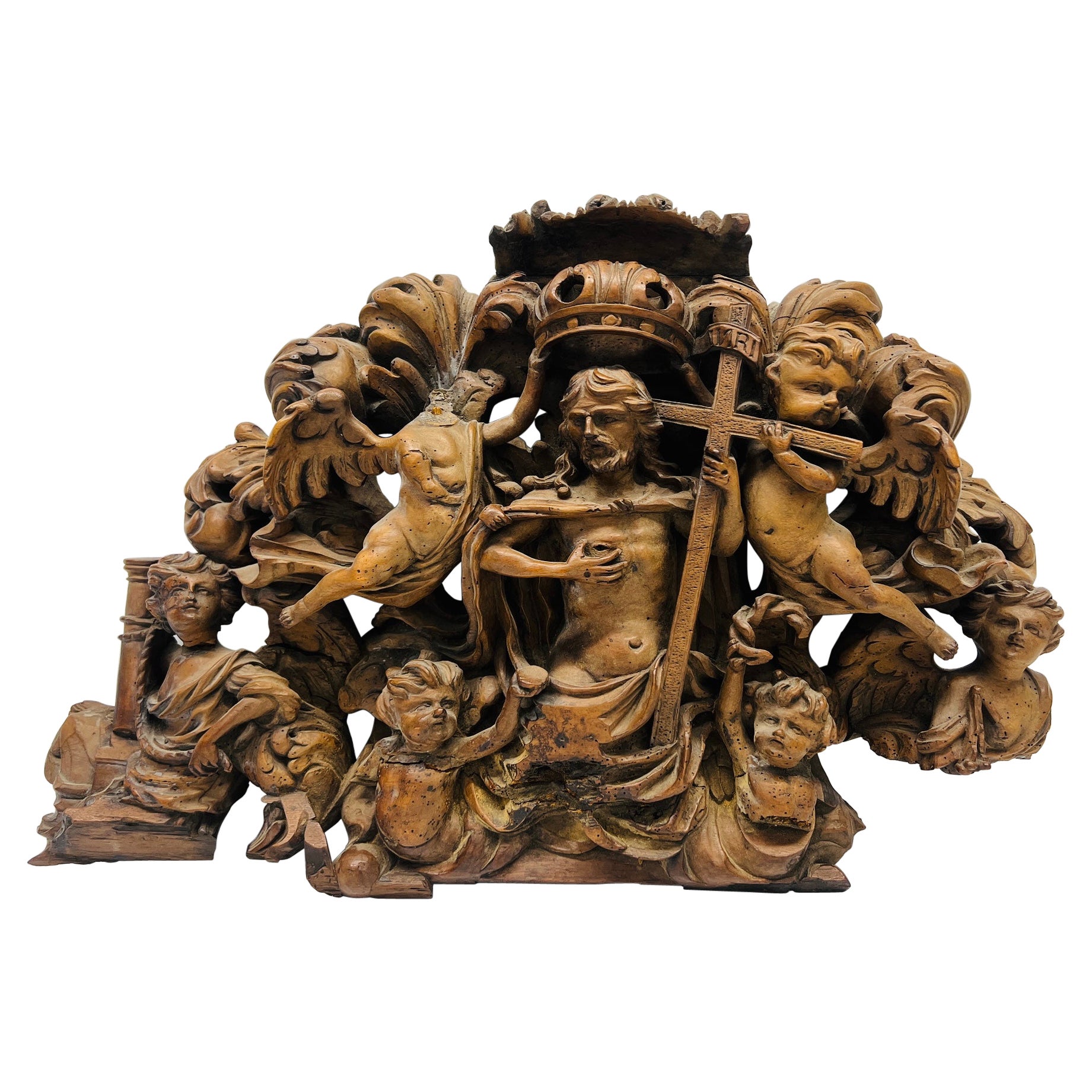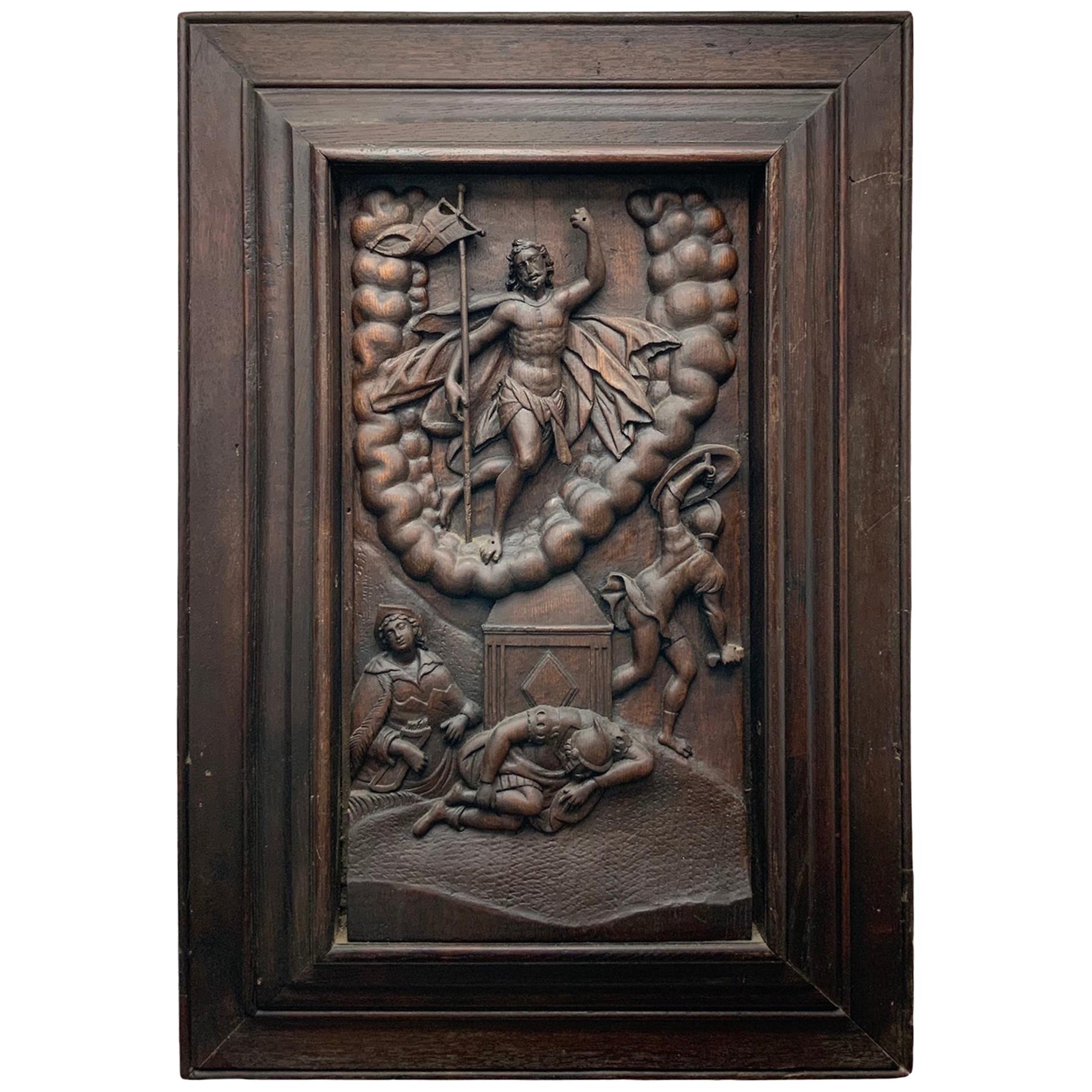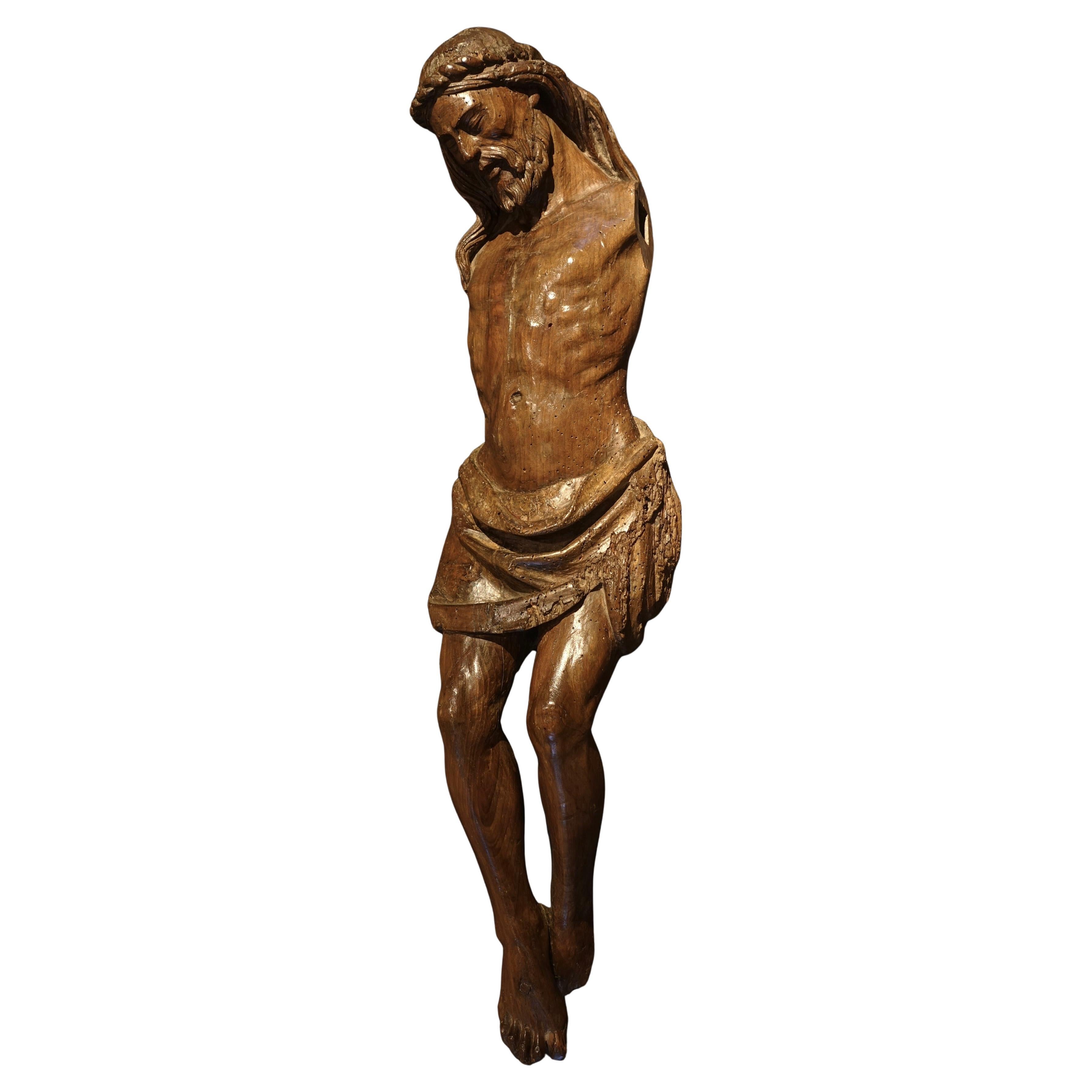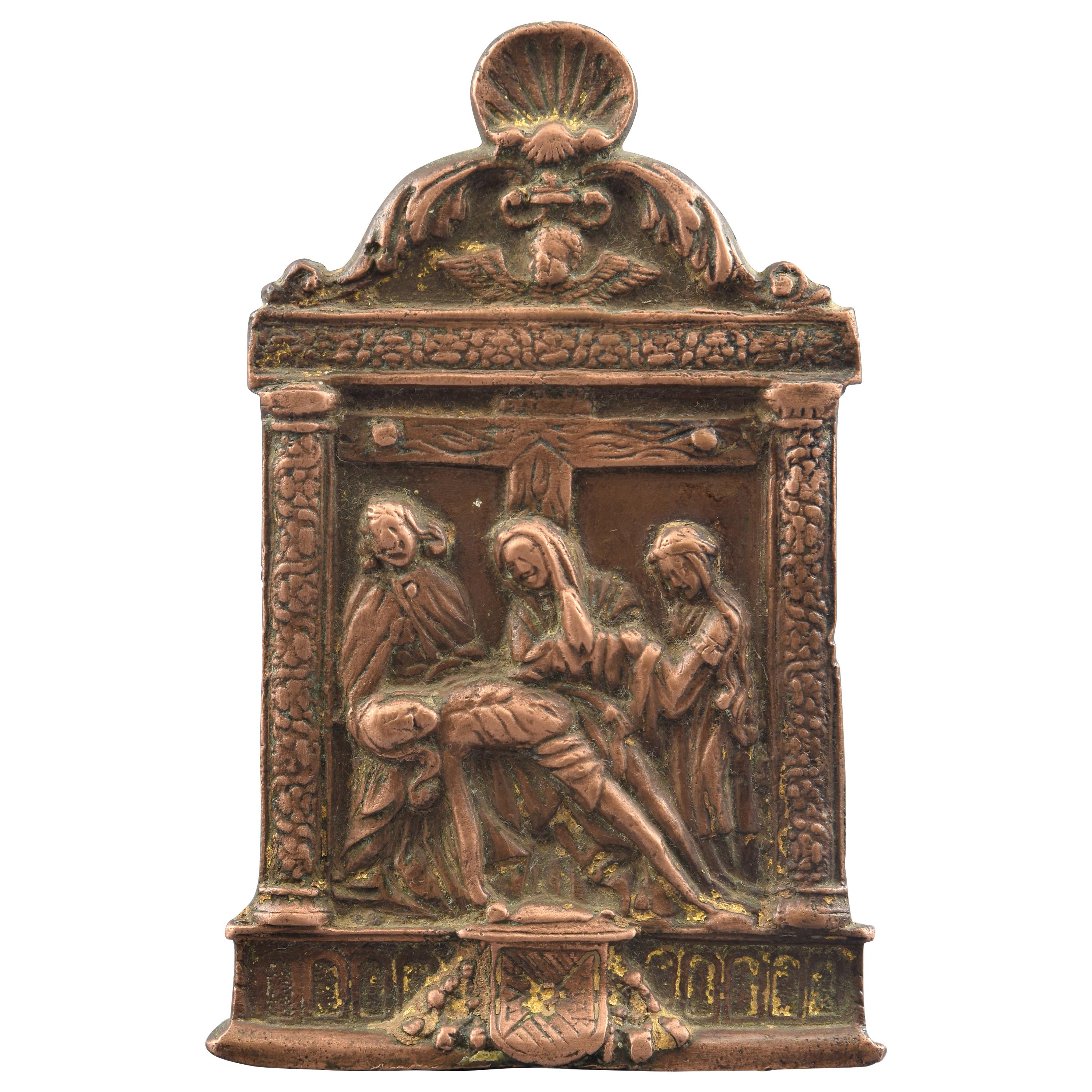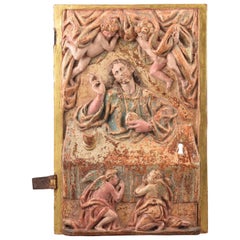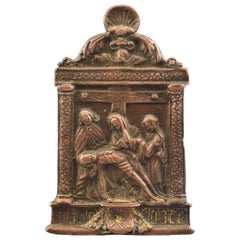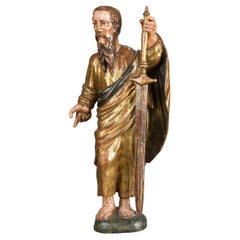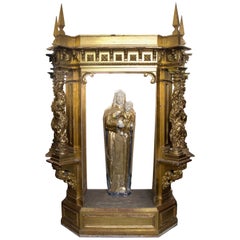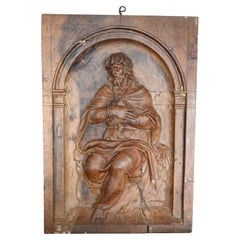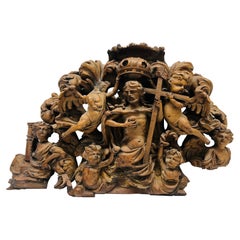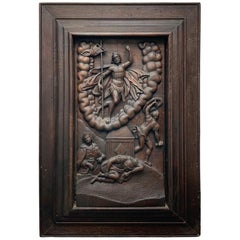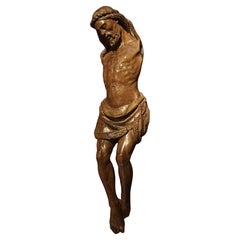Items Similar to “Ressurrection”, Polychromed Wood, Spanish School, 16th Century
Want more images or videos?
Request additional images or videos from the seller
1 of 7
“Ressurrection”, Polychromed Wood, Spanish School, 16th Century
$9,233.68
£6,868.92
€7,700
CA$12,644.06
A$14,058.48
CHF 7,340.56
MX$171,125.90
NOK 93,662.36
SEK 87,757.16
DKK 58,615.85
Shipping
Retrieving quote...The 1stDibs Promise:
Authenticity Guarantee,
Money-Back Guarantee,
24-Hour Cancellation
About the Item
The relief was probably a door of the Sagrario. The piece follows a customary decoration in the tabernacles of the Renaissance and the Baroque. Compare, for example, with the seventeenth century altarpiece of the church of the Monastery of Santa Isabel de Madrid, or with others preserved in private collections. The scene of the Resurrection recalls in details such as the variety of postures of the soldiers, the anatomy of Christ, the movement of the shroud around his body, etc. to outstanding pieces like the relief of the 16th century in Renaissance style of the Museum of the Monastery of the Cistercian Abbey of Cañas in La Rioja. Although they are parts of an altar with a varied theme, Salvation is always insisted on, since they are destined to contain the Sacred.
Measures: 32 x 5 x 52 cms.
- Dimensions:Height: 20.48 in (52 cm)Width: 12.6 in (32 cm)Depth: 1.97 in (5 cm)
- Style:Renaissance (Of the Period)
- Materials and Techniques:
- Place of Origin:
- Period:
- Date of Manufacture:16th Century
- Condition:Wear consistent with age and use. Minor losses. Minor fading.
- Seller Location:Madrid, ES
- Reference Number:Seller: ZF02801stDibs: LU2951322954962
About the Seller
4.9
Vetted Professional Seller
Every seller passes strict standards for authenticity and reliability
Established in 1985
1stDibs seller since 2017
346 sales on 1stDibs
Typical response time: 8 hours
- ShippingRetrieving quote...Shipping from: MADRID, Spain
- Return Policy
Authenticity Guarantee
In the unlikely event there’s an issue with an item’s authenticity, contact us within 1 year for a full refund. DetailsMoney-Back Guarantee
If your item is not as described, is damaged in transit, or does not arrive, contact us within 7 days for a full refund. Details24-Hour Cancellation
You have a 24-hour grace period in which to reconsider your purchase, with no questions asked.Vetted Professional Sellers
Our world-class sellers must adhere to strict standards for service and quality, maintaining the integrity of our listings.Price-Match Guarantee
If you find that a seller listed the same item for a lower price elsewhere, we’ll match it.Trusted Global Delivery
Our best-in-class carrier network provides specialized shipping options worldwide, including custom delivery.More From This Seller
View AllTabernacle Door, Wood, Metal, 16th Century
Located in Madrid, ES
This type of elements are basic in churches, chapels, etc. since they contain the Sacred Forms, reason why it is logical the abundance, with a series of typologies more habitual and traditional or old than others. There are also iconographies more common than others, a certain thematic preference according to the date or school to which the work belongs, etc., always related to the Sacrifice of Christ, Salvation, Transubstantiation, Eucharist, etc. for being a key element for Christianity (especially the Catholic) what they will always contain.
The present work shows a chalice with Sacred Form in what would originally be the interior of the door (very usual iconography) and a somewhat more striking relief to the exterior. Inside that it is a Eucharistic Christ or Eucharistic Savior, the way of presenting it is more usual of the scenes of the Last Supper, being not so frequent to find it alone like this. Compare for example with works such as the door of the tabernacle attributed to Alonso Cano...
Category
Antique 16th Century Spanish Renaissance Religious Items
Materials
Metal
Pax or Pax Board, Bronze, Spain, 16th Century
Located in Madrid, ES
Paper holder bronze, 16th century.
Portapaz made of bronze with an "asymmetric" handle on the back, which presents a decoration in light relief framed in an architectural compositio...
Category
Antique 16th Century European Renaissance Religious Items
Materials
Bronze
Saint Paul, Carved and Polychromed Wood. Spanish School, 16th Century
Located in Madrid, ES
Spanish school of the sixteenth century. "Saint Paul". Carved and polychrome wood.
Devotional image of a round piece carved in wood, polychrome and gilded, representing the Apostle ...
Category
Antique 16th Century Spanish Renaissance Religious Items
Materials
Other
Reredos Fragment, Gilded Wood, circa Second Half of the 17th Century
Located in Madrid, ES
Altarpiece. Wood carved and gilded. Baroque, towards the second half of the 17th century.
The Solomonic column was an element already known in the Renaissance (and before) that was popularized in art, in large part, thanks to the Baldachin of St. Peter's Basilica of the Vatican by Gian Lorenzo Bernini (1624-1633), where he presented branches. In Spain, this type can already be seen in the Silver Tabernacle of the Cathedral of Seville (Juan de Alfaro, 15931596), used in altarpieces from the 1620s; nevertheless, the apogee of the Solomonic column will come from the hand of José Benito de Churriguera, whose altarpieces have an extraordinary importance since the second half of the 17th century and already at the beginning of the 18th century (note similarities
and differences between the present altarpiece and that of the Convent of San Esteban...
Category
Antique 17th Century European Baroque Religious Items
Materials
Wood
Silver Pax O Portapaz, Spain, 16th Century
Located in Madrid, ES
Portapaz. Silver in its color and gilded. Century XVI.
Portapaz made of silver that has a handle (decorated with delicate plant motifs similar to those of the pilasters) and a female and a male bust at the bottom, as well as other architectural elements on the back, and, on the front, an architectural composition classicist basement (with busts flanking a flower and a cross), two pilasters (vegetal decoration and capital recalling the composite order) with entablature (flowers flanking an angel's head; moldings), and a semicircular arch finish with elements veined in relief under cross and flanked by two architectural motifs in the upper part. This composition frames and enhances a gilt silver relief where you can see the Lament or Cry over the Body of Christ, with the Virgin holding the head of Jesus, Saint John at her side, the Magdalene and other characters, a cross following the group and a landscape background with houses and plant elements. This architectural structure mentioned is similar to the one present in other 16th century portapaces, such as that of the Magdalena de Dos Hermanas parish (Hernando de Ballesteros el Mozo, around 1575); or that of the Galaroza parish (same author and date); or that of the portapaz of San Miguel de Jerez de los Caballeros (in some details); etc. As for the relief, it is possible to clearly see a strong Italian influence, and the similarity between it and important pieces such as the Portapaz known as “de Cisneros by Juan de Burgos (1493-1497; MuseoCatedralicio de Alcalá de Henares), as well as in paintings and reliefs. Also noteworthy are both the male and female busts in the lower area and the Maltese cross (or Saint John's) that appears in this area. This symbol was used since the 12th century as an insignia by the Knights Hospitallers of the Order of Saint John of Jerusalem, also known as the Order of Malta...
Category
Antique 16th Century Spanish Renaissance Religious Items
Materials
Silver
Christ of Burgos. Wood, metal. Spanish school, 19th century.
Located in Madrid, ES
Christ of Burgos. Wood, metal. Spanish school, 19th century.
A rectangular base serves as the base for a Latin cross with finials at the three upper ends. This has the usual “INRI” ...
Category
Antique 19th Century Spanish Other Religious Items
Materials
Metal
You May Also Like
Christ On The Cold Stone, Carved Wooden Panel, 17th Century
Located in Bilzen, BE
A large panel carved in deep relief depicting Christ on cold stone.
This panel was probably part of a tabernacle.
17th century.
Panel height 57 cm, width 40 cm, thickness 5 cm.
Category
Antique 17th Century German Baroque Religious Items
Materials
Wood
18th Century, Spanish Baroque Carving The Resurrection of Jesus
Located in Atlanta, GA
This exceptional 18th-century Spanish Baroque carving, titled "The Resurrection of Jesus," is a profound representation of religious artistry f...
Category
Antique 18th Century Spanish Baroque Wall-mounted Sculptures
Materials
Boxwood, Oak
$2,240 Sale Price
20% Off
Flemish Embossed Wood Plaque of the Resurrection of Jesus Christ
Located in Guaynabo, PR
This is a heavy large carved wood plaque depicting an embossed scene of the Resurrection of Jesus Christ. He is standing victorious and elevated over a U shaped cluster of clouds wit...
Category
Antique 17th Century Belgian Baroque Decorative Art
Materials
Wood
$2,962 Sale Price
25% Off
Christ - Umbria, second half of the 15th century
Located in Bruxelles, BE
Christ
Umbria, Orvieto?
Second half of the 15th century
77 x 16.5 cm
Category
Antique 15th Century and Earlier Italian Renaissance Figurative Sculptures
Materials
Walnut
17th Century Carved Wood and Polychromed of Crucified Jesus on the Cross
Located in North Miami, FL
Introducing a captivating 17th-century Italian carved wood and polychromed, gold-gilded crucifix depicting Jesus on the cross. This remarkable piece...
Category
Antique 17th Century Italian Baroque Figurative Sculptures
Materials
Metal
$11,165 Sale Price
30% Off
Amazing French ALLEGORICAL PANEL in walnut 17th Century
Located in Madrid, ES
Amazing ALLEGORICAL PANEL in walnut 17th Century
Magnificent quality wood, inspired by a 1617 panel from the Louvre.
Justitia represents justice, equity and order and Mars embodies ...
Category
Antique 17th Century French Baroque Decorative Art
Materials
Wood
More Ways To Browse
Antique Wood Furniture Parts
The Resurrection
Wood Soldier
Spanish Polychrome
Religious Altar
Used Tabernacles
Antique Tabernacle
Spanish Altar
Body Of Christ
Wood Tabernacle
Monastery Doors
Church Tabernacle
Tabernacle Door
Resurrection Of Christ
Baroque Tabernacle
Religious Altar Pieces
Tabernacle Door Wood
Religious Altar
